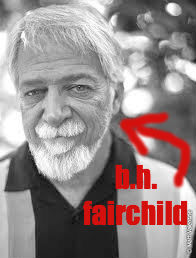Everything Old is New Again?
It all started with a VHS copy of Black Christmas.
Browsing through discarded copies of Steven Seagal/Jean-Claude Van Damme action trash and forgotten Gen X rom-coms shined a tattered cover with the tagline “If this movie doesn’t make your skin crawl … IT’S ON TOO TIGHT.” The box was a bit worn at the edges and tattooed with stickers for a video store in Palmdale, California. What was this tape’s cross-country journey, from a small desert town to a little second-hand record and video store on St. Mark’s Street?
Perhaps, a story you’ve heard before: a video store closes, and a stranger purchases a forgotten film from his or her youth on the whim; a child grows up and moves to an east coast school, armed with an array of atypical cultural accoutrements “borrowed” from his or her parents; the now-adult loses interest in such dated technology, and—that’s where I come into the story—the accumulate-and-purge cycle begins again. I bought the tape for four dollars and instantly ran to my dorm room to watch it.
The room was quiet enough to hear the spools churn as the VCR pulled the tape from the cassette shell and wrapped it around the head drum. An elevator down the hall rose, stopped, opened, closed, and rose again. A muffled conversation two doors down slowly died away, as black leader filled the screen; a fingernail or two was bitten; and I moistened and remoistened my dry lips, wishing I had poured myself a glass of water before sitting down. I knew nothing about the film, and that both scared and excited me. Suddenly, a church bell rang, and the image of a three-story house faded in across the television screen.
The film resembled John Carpenter’s Halloween from the start: an opening shot from a killer’s point of view; a plot revolving around unwitting teenagers who are picked off one-by-one by an unknown madman. However, reading the back of the cassette box, I discovered that the film was released in 1974, four years before Michael Myers became a household name. (The rumor is that Carpenter was inspired to make Halloween after reading a treatment for a sequel to Black Christmas.)
The film wasn’t graphic or gratuitous in its violence like many of the slasher flicks I had come to know, nor did it contain any supernatural slant like Halloween, or Friday the 13th’s Jason Voorhees to set up a future franchise. And while the plot may seem generic by today’s standards—a sorority house is terrorized by a “prank” caller on Christmas Eve, when, little do they know, the calls are coming from inside the house—the film’s patient build-up felt authentic, its realism was chilling, and the film was funny. (The house mother, looking at a hideous nightgown gift the sorority girls have given her, replies, somewhat prophetically, “ Jesus, I wouldn’t wear this to have my liver out!”) Throw in the fact that the director of this under-seen gem, Bob Clark, was also behind Porky’s, A Christmas Story, and Baby Geniuses, to name a few, I couldn’t wait to share my find with my friends.
Finds like Black Christmas became not only a badge of honor—a physical product of the hours spent poring over book covers in decrepit cardboard boxes, or sifting through unmarked DVD cases in some public library’s basement—but also a map to specific periods in my life. Black Christmas is a reminder of my undergraduate years as a film student, when I spent more time between the aisles of Mondo Kim’s Video and The Strand Bookstore than in class. A copy of Amelie; one of my first dates with my fiancée. An old edition of James and the Giant Peach; the day my grandfather died.
It’s hard not to flash a smug smile as I look around at my office’s bookshelves, filled with the same elated awe as those staring at a world map for the first time, searching for unknown territories. However, it’s also a reminder of how much of my current cultural consumption relies on digital channels; of the numerous tabs on my browser, each illustrating my need to consume as much as possible and my inability to ever succeed. Tabs are opened and closed and opened. New music is recommended to me on Spotify through some engineering algorithm. No matter what digital network I’m on, I’m met with a constant barrage of content, whether it’s the endless list of titles on Netflix, numerous re-pins and reblogs of the same artwork on Pinterest and Tumblr, or the “re-found” and retweeted content on Twitter (because everything old is new again).
Last year, Tim Parks argued in the New York Review of Books that, while e-books discouraged browsing, arguments about the merits of different formats distract us from the written word itself. I would agree if the reading experience—and all other forms of content consumption—were that simple to define, but the pace I read and how the text is formatted, among other variables, inevitably affects the outcome. As an anonymous blogger wrote in response to Parks’s piece, your reading of a book is like the recording of a particular song, and no one reading is more “true” than another. Cultural consumption is a performance of sorts. Books difficult to enjoy within the confines of my apartment during the winter months I suddenly revisit with ease on vacation during the summer (and vice-versa); a glass of wine inexplicably tastes better when adjoined with pleasant conversation than without.
And while I would agree with Mr. Parks that books are written to be read, regardless of format, I still question his uncritical approval of digital formats. Do we ever truly possess our digital content in the same way we possess a VHS tape found in a bargain bin? And what do we lose in the digital “browsing” experience? There’s more to browsing than just possession; it’s about transforming, as Meghan Lewit describes in Salon, “an ephemeral experience into something concrete, a beloved artifact that can be preserved and revisited”—an experience lost online. So, listen to the spools churn, the records turn, and the pages flick; each physical item of yours has a story to be told.


